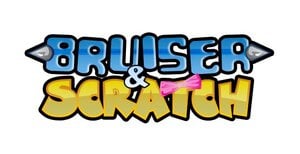
Back in the rolling mists of time we ran an interview with Steel Penny Games - the chaps behind the upcoming WiiWare puzzler Bruiser and Scratch in the Case of the Puzzling Paw. Formed by ex-Naughty Dog staff, Steel Penny Games is headed up by Jason Hughes, who agreed to a second interview after being badgered by us for more info on this interesting WiiWare title.
WiiWare World: During your time at Naughty Dog what well known games did you and your partner in crime Andrew Gilmour help to develop? What were your respective roles?
Jason Hughes: Andrew put in a lot of hours making levels and environments on Jak 2, Jak 3, Jak X Racing, and some of Uncharted: Drake's Fortune. I spent all of my time—yeah, almost 4 years—working behind the scenes on the ICE team. That was kind of a think-tank working on PS3 technology to help get games going quickly that really had that “Next Gen” feel to them. If you scan the credits of lots of PS3 games, you'll find our team there. So, while I didn't get to work on games myself, a lot of other studios got to focus just on their games rather than building engines from the ground up.

WW: What encouraged you to go off and set up your own studio?
JH: Isn't it every game developer's dream? It's so adventurous. I suspect it's as close an allegory to a writer going off to a cabin in the woods for a year to search himself for meaning. Sometimes the writer comes back with a masterpiece. Just to be clear, I am not saying Bruiser & Scratch my magnus opus, but perhaps a step towards it. These days, it takes more than a year to pull something significant off. But more practically, it's a good time to start something new. The great titans of the industry are busy getting bigger, and that reduces risky projects. It opens avenues for smaller studios to bring out games that don't follow the prescribed formulas.
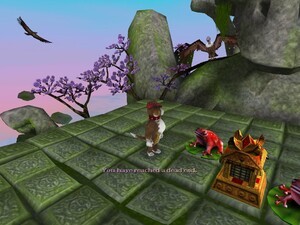
WW: How did you come up with the name Steel Penny Games for your studio?
JH: Actually, there were a number of reasons it seemed like the right choice. In part, it was a great memory from my childhood, when my dad took me to a coin shop to buy a pristine 1943 steel penny. It was probably the first time we ever 'connected'. Thinking over what has changed in the way people play games over the years, it has gone from a solitary activity to a social phenomenon, spurred on recently by the Wii. Games can actually encourage relationship-building. In a way, I wanted to tap into that sentiment. Another reason for the name is that the literal history of the steel penny is curious and unique... a confluence of circumstance that produced something unique and memorable. I certainly hope that as a game company, we strive for that kind of description.
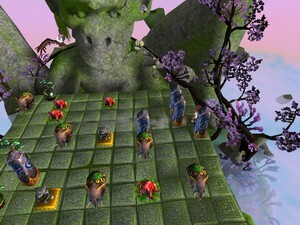
WW: What was the inspiration for the characters Bruiser and Scratch? Is the intention to have a series of games featuring these characters?
JH: Bruiser and Scratch were originally intended for a kind of fun casual game that told their story in their very cutesy neighborhood. After finishing pre-production, we reviewed our progress. I liked the fiction and design, but the gameplay was to predict whether it had the fun factor to make the rest of the game stick, and the amount of time required to iterate on it could be larger than we could afford. For our first release, we had to make a hard decision to go back to the drawing board and make something that stands out more in style and makes better use of the features and limitations in the engine I'd built. This actually worked out well, because we had the back story to pull characters from when writing the story arc for this puzzle game. As for making a series, I would like to put Bruiser and Scratch in more than just a puzzle game context. But even if we stick to that, there are more parts of the story to follow, eventually.
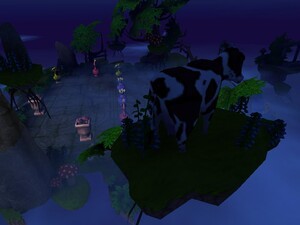
WW: Can you explain the core mechanics of the gameplay in B&S?
JH: Hmm. Matching game pieces, sorta. But it's as much about planning and raw problem solving as matching pieces. The game is fully 3D, but the gameplay is essentially a sliding block puzzle with unusual properties. You basically control one of the heroes and walk around shoving game pieces into each other on a giant chessboard. The hard part is that the board wraps around, so there are a lot of possible moves that will baffle you at first, until you get the hang of it. Oh, and when pieces match, they combine into a single space, leading to fewer pieces and consequently fewer possible moves. If you aren't careful, you can run out of valid moves, leaving you at a dead end. There's a good bit more planning and thought involved in solving a puzzle in Bruiser and Scratch than in a lot of other puzzle games.

WW: What existing puzzle games have inspired you in the development of B&S? What puzzlers are particular favourites of yours?
JH: Lots and none. I used to love playing adventure and puzzle games, but recently I haven't kept up with it. I think there are three tenets to great puzzle games. First, they should provide a real mental challenge. Second, they should offer you some freedom in their solutions. And last, you must be able to feel like you're making progress without necessarily winning. The best example is old wooden peg-jumping puzzles, where you are supposed to end up with just one peg in the end. Bruiser and Scratch have a lot in common with that kind of mindset. Most recently, I've been playing WiiWare games more than others, and that World of Goo is probably the only puzzle game on the system that exhibits all three qualities.

WW: Is there a danger that the gameplay might get repetitive quickly? What did you do to avoid this?
JH: Entirely possible. It will speak to some people, and maybe not to others. I'm less concerned about repetitive gameplay and more worried about what happens in the first five minutes of gameplay. It's then that most people make decisions about whether a game is interesting enough to invest the time into learning the game's rules. Of course, we did try to address repetitive gameplay in several ways. Varying the environments helps keep the visuals fresh throughout the game, as does the introduction of different game pieces at each new environment, some of which you only see in the harder levels. We added a story that introduces new characters over time, so worth playing through if you like the characters. We added brief cutscenes to propel the story, rewarding players for their successes. We put in a Challenge mode that lets players skip around to find a level they find entertaining, without having to unlock things. I find that unlocking things is irritating to players who just want to enjoy a game in short bursts, and want to control the discovery process themselves. But as with most puzzle games, once you get into the game and realize it's not only difficult, but it's something you can solve, there's a tremendous personal gratification that comes with it. A lot of what makes a puzzle game fun or not is whether you feel personally victorious at the end or not. What's cool about Bruiser and Scratch is there are often many ways to solve each level, and in any room full of people, expect that each will try a different approach. Finally, we added a gold star for folks who tie or beat our best solutions, so there's some replayability there as well. The obsessive puzzle crowd have something to obsess over. <laughs>
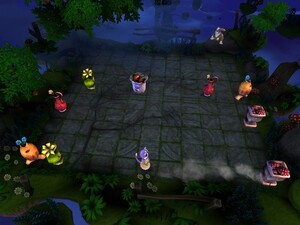
WW: The levels in B&S are something a bit surreal with things like a cow floating on a cloud, what inspired some of these obscure ideas?
JH: It is important to me that a game push some boundaries. Andrew and I are fans of Rodney Matthews and Roger Dean, both artists with incredibly vivid and kind of trippy imagination. While I don't want to imply that we made a game in that style exactly, I know I took considerable inspiration from them both. The story is supposed to be set in a foreign and unfamiliar and ancient world, so these kind of visuals actually make sense in that context. Plus, I'm really, really tired of seeing every game implement a fire level, ice level, water level, and air level... as though that is all the creativity the game industry can muster. Players should demand better.
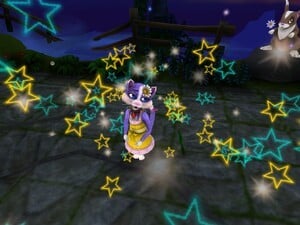
WW: How long will the game take to complete? Is this largely dependent on skill?
JH: That's a tough question. No matter how you slice it, there's a lot of gameplay. If you only want to play the story part, you might be able to get through it in 5 hours if you immediately understand the game and never get stuck on any puzzles. There's about 12-15 hours of gameplay for those kinds of people, if you finish everything. However, one of our testers took 45 hours to finish every last board, so your mileage may vary. It's not clear exactly what it is about some people that make them so good at solving puzzles, and others who have to work at it more. I do suspect the game is measuring you, in a roundabout way, and that it leaves you a little sharper in the process.
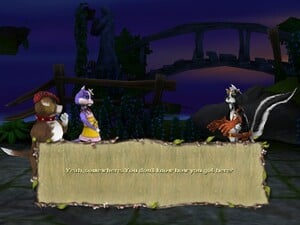
WW: What age range do you think B&S will appeal to the most?
JH: I hope it appeals to everyone. My own kids, who are 4 and 6, both enjoy solving the easier puzzles. I've noticed that most people who check out the game show an interest, but if I had to pick a single demographic, I'd say women over 30 were most eager to play. And actually, hardcore gamers were quick to call it deep or addictive. My design criteria was to build a game that's easy to pick up, that's something people could enjoy of a long period of time but in small time increments, and had some kind of cooperative and competitive element to it. The cooperative element comes from having friends or family help solve puzzles together, because sometimes a second pair of eyes is really helpful. The competitive element comes from having gold stars for best solutions (competing versus the developer), and by showing the best score across all profiles on the console for each puzzle.
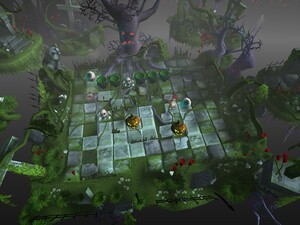
WW: Was it a challenge keeping your game within WiiWare’s 40mb file size limit?
JH: Not so much. I actually felt lucky to have so much space available... it could have been worse, but we worked hard throughout development to keep our art optimized for space, and it paid off. We didn't have to resort to extreme measures to fit, though we just barely fit. I only wish that there was more system memory on the Wii so there would be less need for shuffling data around when buying a new game.
WW: Do you have a launch date in mind for North America? What price point are you aiming for?
Real Soon Now. We're in talks with Nintendo to accept various forms of payment for our game, but the logistics of shipping moose blankets has the post office worried.
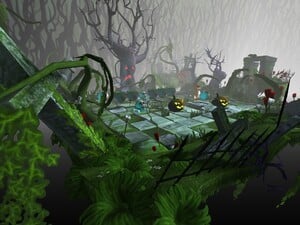
WW: Do you have plans for a subsequent European release?
JH: We're in discussions with Nintendo of Europe about it. The burden for translation in Europe is not generally an issue for larger game companies, but when it comes to the little guys like us, it is a considerable (but necessary) headache. My guess is, yes, but it will take a few months to get through translation and testing.
WW: With several huge titles on WiiWare at the moment are you concerned that B&S might get overlooked?
JH: It's crossed my mind. I mean, if you look at all the games that are on WiiWare right now, there are a handful of them, right or wrong, getting most of the attention. Our goal initially was to be out on the system in July. Things got pushed back several times because we wanted to give the player a better experience, so we added features and depth and more content. Now we find ourselves fighting for attention during the holiday release season, which is always a good time to be out on a store shelf... but WiiWare games aren't sold that way, so we're competing with a lot more than just other WiiWare games right now. As for specific competition on WiiWare, there are a couple of great games on the service that are really excellent and deserve to be played. But if anything, they will help WiiWare gain users, and they will discover all the other cool games on the service. So, hopefully these huge titles actually work in our favor. It's still way cheaper to buy a game on WiiWare than to find one at retail, so I suspect that players who figure out how to login to WiiWare at all are more likely to buy any and every game that looks interesting online before going back to retail. I could be wrong, though.
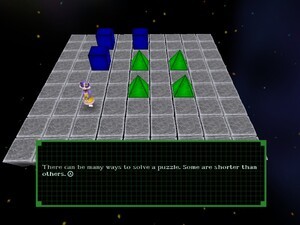
Indie development is the hardest job in the game industry, and console development is the other. WiiWare is both put together. To be honest, I am a little dismayed at the disconnect between what WiiWare gamers say they want, and what actually sells. It's hard to know what will do well, what will break even, and what will be an embarassing failure, because it's a new market and nobody can predict at this point... unless, of course, it's got name recognition. But I wouldn't be shocked if some of indie developers start looking for alternative markets.
WW: What are your favourite WiiWare games to date and why?
JH: Right now, I'd have to say Lost Winds and World of Goo are my favorites. Lost Winds, while made by a large team, has beautiful style and actually found an excellent use for the Wii Remote pointer. Overall, it has tremendous polish and is the jewel of WiiWare. World of Goo, while building on the shoulders of previous construction games, has excellent design, some novel elements, and a nice art style that evokes shades of Dr. Seuss without being too campy. And it's a fun puzzle game. I've recently started playing Toki Tori, and without having gone too far into it, I love the energy and colors. It has a wonderful old-school platformer feel to it, with the addition of items that really helps bring out the puzzle aspect. Star Soldier R is one of those that I return to periodically and try to beat my own scores. The 2 minute mode is brilliant. It's a competent shooter and a whole lot of fun to pass around the controller in a room full of people.


Comments 18
Horray for mention of Lost Winds in favourite WiiWare games question. I thought everyone had forgotten about that title.
It was interesting to hear about the issues with translations. Notice they said smaller companies so I'll continue to wait patiently for Groovin' Blocks.
Edit: And shake my fist at larger companies like the one begining with N...
Looks good, but a few monhs to translate? oh well looks woth the wait.
More puzzle games?
The gameplay kind of sounds like Tricky Kick for the TG16.
I'm glad to hear more from them. I haven't heard anything about this for quite some time. I think I'll be giving it a purchase, being the puzzler fan that I am. Prediction of 1000 Points?
That would've been cool if they added leaderboards for best times (I always get a kick out of those, especially in my favourite puzzle games where I felt it could have been added) but the fact that they added Gold Stars to acknowledge Staff Records is a nice touch, indeed. I feel it's missing in some games today.
That would've been cool if they had worked on Crash Bandicoot at all.
It's about time we heard from that game again.
Finally! I've been waiting ages to see more info on this game!
@KS8: I agree, when I read the first interview, I was really excited at the prospect of this being created by the original Crash games.
I also feel a bit saddened by the extra wait for us
Ah well, at least it looks pretty good.
Yay, MORE puzzle games?
This game is going to suck!!!!!!!!
That's so weird. i was looking at the game in the coming soon section a couple of days ago thinking "It's been awhile since we heard anything on this" and then the interview appears.
Great interview but not sure if I'll buy the game. I don't know what it is but Bruiser and Scratch reminds me of Sam & Max.
@Wario4mom: give it a chance - it looks pretty good. If you still aren't impressed though, I'd wait for a review before jumping to such conclusions, there.
@Terranigma: I was only reading the original interview a few days back as well. What a strange conicidence...
@Wiiloveit
Indeed. Funny thing is, the same thing happened before. Outside of WiiWare though, can't remember what game but it was something for the Xbox 360. Could it be Deja Vu?
Oh, and love the Hello Kitty Avatar. If, you've seen my post in US releases, you'll know how i first reacted but i think it's just brilliant.
"There are a handful of [WiiWare games], right or wrong, getting most of the attention."
Right: Rockman 9; World of Goo
Wrong: The Amazing Maze; Beer Toss
Controversial: My Pokémon Ranch
Rockman 9?? never heard of that one. Did you mean Megaman 9. If so I do agree with your list.
^Rockman is Megaman's Japanese name.
Oh, and love the Hello Kitty Avatar.... i think it's just brilliant.
Yeah. Thanks for that.
Do i detect sarcasm there?
Tap here to load 18 comments
Leave A Comment
Hold on there, you need to login to post a comment...